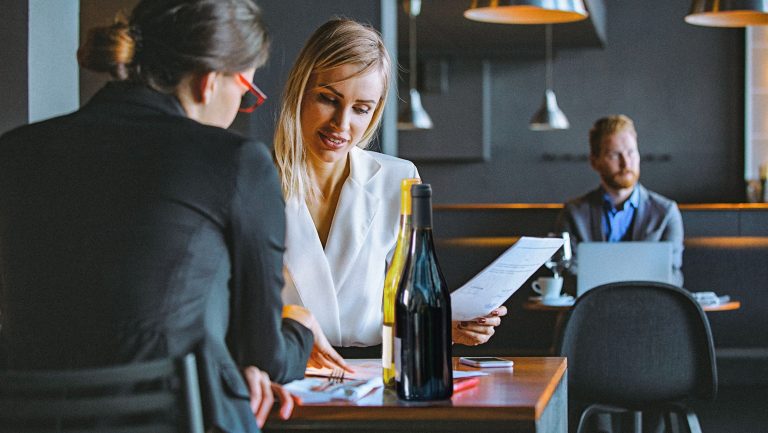While some wine importers have dabbled in spirits for decades, the sheer number of importers today who are viewing spirits as a rising profit center for their businesses has made for a noticeable trend. There are several reasons for this. For one thing, the popularity of craft distilling in the United States has shown that millennials have a seemingly insatiable appetite for something new when it comes to spirits. This has led to a growing demand for new, smaller, esoteric spirits brands from overseas.
At the same time, many wine importers in the U.S. have seen the demand for certain of their core wine categories become a little sluggish, which has been reflected in some of the latest U.S. customs data, pointing to a weakening in the demand for imported red and white wines.
Venues are also changing, and with that, new opportunities are presenting themselves. The “dive bars” of bygone years are giving way to more upscale establishments, like lounges, wine bars that serve cocktails, and all-day eateries, with new ones opening all the time to cater to today’s cocktail culture. Many of these do a healthy business in wine as well as cocktails, creating a one-stop-shop situation for some wine importers and their distributors—and another lucrative channel overall for spirits.

Don’t miss the latest drinks industry news and insights. Sign up for our award-winning newsletters and get insider intel, resources, and trends delivered to your inbox every week.
Embracing Change
“There has been an opening [in] the wall, the separation, between restaurants and bars,” says Victor Schwartz, whose company, VOS Selections, based in New York City, is celebrating 30 years as a wine importing business. “You have this other kind of world that’s somewhere in the middle—a place for more spirits, fine spirits, high-quality spirits, to be served to the public. And it just drives more interest in craft spirits. You can have a few cocktails and maybe have a glass of good wine to go along with [them]. It all blends together in a different way. It’s absolutely another channel.” Schwartz first started bringing spirits into his portfolio 18 years ago, but has been especially focused on adding American spirits over the last six years. In the last few years, he says, he’s seen all of his competition jumping into spirits.
Karl duHoffmann has overseen spirits brands for The Winebow Group and Martin Scott Wines, which launched its spirit portfolio in 2011. “The wine houses are opening up to be more receptive to spirits, specifically because of the small producers that are clamoring for a piece of the market,” he explains. And this has also proven to be a strategic advantage to many importers.
For example, duHoffmann recalls what happened when he worked as a brand manager at Winebow from 2009 through 2011. “As Luxardo Maraschino started to really enjoy a revival with the craft cocktail revolution, more and more people who would not have done business with Winebow to buy wine wanted to do business with Winebow in order to get Luxardo Maraschino,” he recalls. “Another example was Del Maguey Mezcal. More and more people, like [buyers for] bars, that would not have been looking at Winebow became very important customers.”
The reality is that the “craft cocktail revolution,” as duHoffmann puts it, is partly responsible both for the new opportunities and for the challenges facing wine importers. Jon Moramarco, the managing partner of the beverage alcohol industry consulting firm bw166, based in Santa Rosa, California, says the challenges are readily apparent in the latest U.S. customs import data, released for the 12 months ending in October 2017. He adds that with regard to longer-term trends, three-year CAGR (compounded annual growth rates) of imports of 9-liter cases of packaged red wines to the U.S. are down 0.3 percent, while whites are up only 1.5 percent over the same period, and wines over 14 percent ABV (a mix of both fortified and table wines) are down 4 percent. “When I look at the data,” Moramarco says, “it basically says that if I’m an importer, and my main focus is imports, unless I really have some strong brands in either rosé from Provence (up 38.6 percent) or Champagne or Prosecco (up 13.5 percent), I’m looking for other ways to expand my business.
“So, as I look at [wine] importers,” Moramarco continues, “they’re doing one of two things—they’re either taking on imported spirits because they look at themselves as importers, or some importers are actually starting to move a little bit into representing domestic wines on a national basis. They’re saying, ‘How do I grow my business if the main categories I am in are not growing as fast as I would like?’”
Getting On Board
Frank Coleman, a senior vice president of the Distilled Spirits Council, based in Washington, D.C., adds that the trend should come as no surprise, since U.S. consumers are increasingly drinking cocktails and the distilled spirits category has had seven straight years of market share growth. “Given these facts,” he says, “many wine importers are seeking to diversify their portfolios with spirits.”
William Earle, the president of the National Association of Beverage Importers, also based in D.C., says he has noticed that the number of solicitations he has received from smaller spirits brands outside the U.S. has increased in the past few years. “Particularly through Eastern Europe and Southern Europe,” he says. “I think any foreign producer who’s looking at expanding is probably saying, ‘When can we get into the U.S. market? I’ve got a unique product here from Austria or Hungary, for instance.’ I think they’re pushing and trying to find importers who will pick up their brands.”
Interestingly, some of the newer wine import companies may have an advantage over industry veterans when it comes to picking up new craft spirits brands. Craft distilling is being driven by younger entrepreneurs for the most part, who in many cases are seeking the same when it comes to an importer.
“When I started the company 15 years ago, nobody [in the wine industry] really took me seriously at 32 years old,” remembers Mark Kuspira, the founder of Crush Imports, based in Alberta, Canada. “But I would say it’s probably the complete opposite for the spirits industry. They’re looking for youth; they’re looking for vitality. It’s just the [younger] generation that is driving the cocktail culture.” Kuspira says he has grown his spirits portfolio significantly over the past five years.
Even just a few strategically chosen spirits can sometimes be all that’s needed to round out a large wine portfolio and boost an importer’s business with its customers. Such is the case for Frederick Wildman and Sons, based in New York City, which carries Chartreuse, Edinburgh Gin, and a few brands of Scotch. It started carrying Chartreuse in the early 1990s, and that was the only spirit in the portfolio until 2009, when Wildman brought on two whisky brands and a mezcal. The importer now has seven spirits brands, and its portfolio is still growing. “There’s a similarity between Chartreuse and wine because you’re dealing with terroir,” says the company’s director of specialty spirits, Tim Master, explaining that for his salespeople, speaking the language of spirits is not all that big of a leap. He adds that a fine meal can start out with a glass of Champagne, continue with some Burgundy with the main course, and finish with Chartreuse. “And that,” he says, “allows a wine company to own that meal, so to speak.”
Understanding the Challenges
But spirits also present some unique challenges that may come as a bit of a surprise to a wine importer. Andrew Grossman, the founder of Lagniappe Beverage, which is now the Chicago-based arm of T. Edward Wines, says, for example, that some of the smaller spirits brands can easily get lost in what is an increasingly crowded and competitive field of alcoholic beverages. “Even more so than wine, the marketing aspect of spirits comes into play more, whether that’s getting it into cocktails, or getting a bar to feature it, or doing tastings in a store,” he says. “We’re constantly thinking about what kind of promotions we can run. Can we do an event at a bar to promote the spirit? Maybe get the master distiller in to do an event to turn people on to it.”
Grossman also points out that spirits are a higher ticket price in the store. “Is someone going to spend $50 on an unknown [brand]?” he asks. “Or are you just going to buy Maker’s Mark because you know it’s good?”
Yet despite such challenges—and risks—there’s always the chance that a wine importer may hit on the next up-and-coming spirits brand and get in on the ground floor of something big.
Says Master, of Frederick Wildman, “It’s a competitive world out there for sure, and everybody wants to find the next unicorn, hot brand, the next category.”
And there are other benefits. “For me, it’s been a lot of fun,” says Grossman. “I love the diversity of having different products in the portfolio.” He also underscores that something that never seems to go out of style and that seems to be practically recession-proof (or economy-proof), is that people drink—in good times and bad. “But what they drink constantly changes,” he points out. “My guess is that more and more importers and distributors are going to diversify, because as the demand ebbs and flows, those who aren’t prepared to ride the waves are going to struggle when one product is up and another is down.”

Dispatch
Sign up for our award-winning newsletter
Don’t miss the latest drinks industry news and insights—delivered to your inbox every week.
Andrew Kaplan is a freelance writer based in New York City. He was managing editor of Beverage World magazine for 14 years and has worked for a variety of other food and beverage-related publications, and also newspapers. Follow him on Twitter at @andrewkap.







